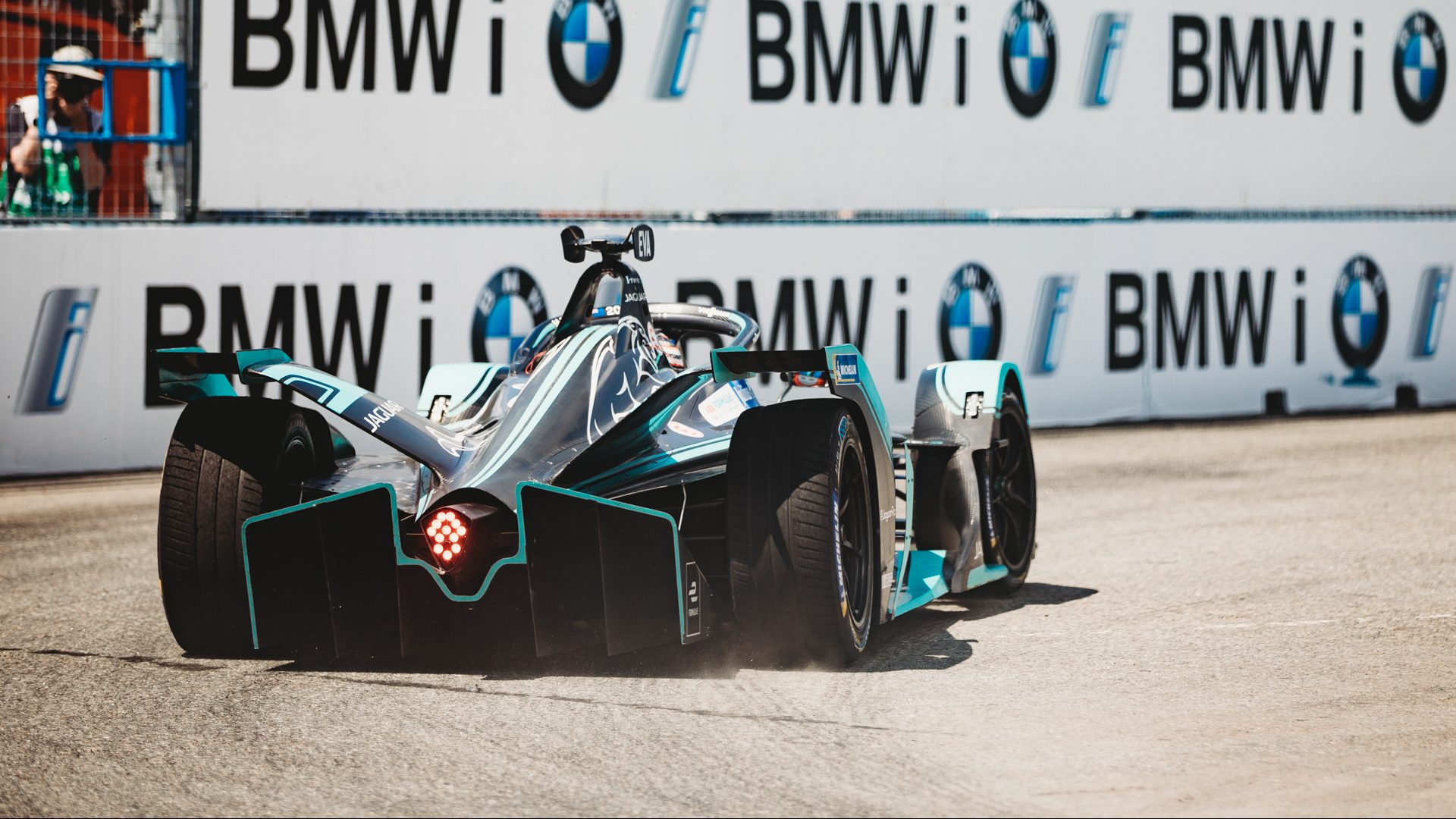

How does someone who’s spent a lifetime praying at the altar of flame-spitting, ear-cracking violence of traditional racing deal with the eerie stillness of a Formula E race? How do you reckon with that electric wizardry being called the future of motorsports? Easy: watch a race in person.
Formula E has received its fair share of guff from the Greek chorus of motorsports Neanderthals, myself included. Electric racing doesn’t sit well with the old guard; it’s new, first of all, and it forgoes the howling noises that many view as a quintessential component to having fun. It’s a perfect cocktail for thousands of “Old Man Yells at Cloud” takes. But underneath that pedantry lies some super tight, nail-biting action. Better racing than I’ve seen in years, really. Whereas Formula 1 and NASCAR have become trite contests of funding, Formula E brings on-track spectacle back to racers and race fans alike.

I went to the final round of the 2018–19 FIA Formula E season in Brooklyn, New York in July. Set on the harbor against the backdrop of the Lower Manhattan skyline, with the Statue of Liberty to the east, there’s no beating the venue. It’s a place you’ll never see another (sanctioned) internal-combustion race—while noise regulations have sent most urban courses packing in this country, Formula E is able to drop into the heart of a major metropolis.
So the series delivers racing to the people, and man, the people came. Formula E Brooklyn sold out in a manner of weeks. Crowds are still smaller than your average Formula 1 race, but they’re growing and the Brooklyn faction was excited. You might expect it to be full of half-curious, mustachioed millennials looking at their phones, but everyone—including a lot of younger kids—was cheering, wearing team kit, and genuinely following the race. That’s important, because Formula E racing is so kinetic that it demands your attention. The wheel-to-wheel action is constant and chaotic.

At the back of the track, there’s a 180-degree corner at the end of a fast straight. Drivers have just enough room to dive under braking to make a pass. As it was the last race of the season, no driver—even ones outside of the championship points—was leaving anything on the table. Mouth agape, I watched racers repeatedly push it past the last sensible braking zone, lock up their tires, and skid right into one another. Carbon fiber body parts flew. Important things broke. They kept going. The race became Formula E Rallycross and delivered some old-time brutality.
While tight sections have the potential to devolve into a quasi demolition derby, the more open areas proved Formula E’s racing emphasizes heroic driving over the engineer’s homework. I’m looking at you, Formula 1. For example, the car has little aerodynamic downforce. Drivers rely on the mechanical grip of the suspension and the specially designed Michelin non-slick tires. Bravery and performance go hand in hand. You could see the drivers were actually driving beyond the limit as the car’s tail shimmied and shook.

By the end of the race, everyone was on their feet watching the cars go by, cheering, yelling, screaming, and gasping. We were enthralled—and so were the children. Go to any Formula 1 race and it’s easy to think you’ve entered the chilling world of Children Of Men. Kids have been priced out of Formula 1 and most other racing series. Formula E is a people’s event with tickets starting at just $12.
Talking with fans, teams, and the series’s executives, I found everyone was a conventional enthusiast rather than the Silicon Valley junkies you’d expect. They’re not watching because of the tech, though that’s an integral part of the racing and blisteringly cool, but because they’re race fans. They want to watch drivers go head-to-head but have been pushed out by the money-hungry rulers that are determined to exclude the next generation.

There’s also expanded manufacturer support. While IMSA, Le Mans, WEC, Formula 1, and other racing series lose manufacturers due to budget constraints, lack of appetite for racing, and dwindling returns, Formula E is actually adding manufacturers. Jaguar led the charge as one of the first to sign up and the British marque added a new feeder series racing nearly bone-stock I-Paces. But the likes of Audi, BMW, Nissan, Nio, DS, HWA-AG, and others have also entered the series. Porsche and Mercedes-Benz are set to join next year, anchoring one of the most diverse grids you’ll find on any track.
As someone who’s still enamored with the internal combustion engine and not yet ready to give up his Mazda 787 Bs, Ferrari V-10s, Audi S1s, and BRM Type 15s, Formula E made me excited for the future. Whereas Formula 1 is prescriptive, Formula E gives you drama and drivers pushing limits. If you’re a race fan missing the Golden Age of racing, do yourself a favor and buy a ticket next time Formula E comes back into town. You’ll be floored—and ready for the future.